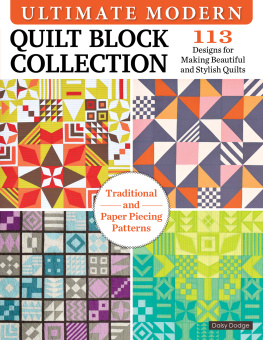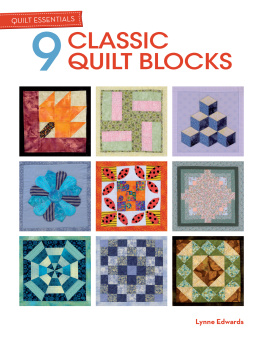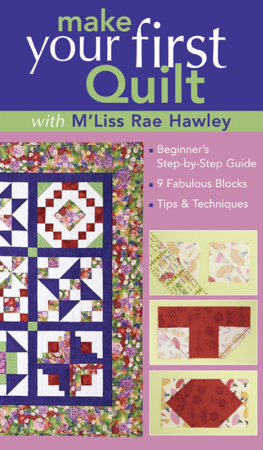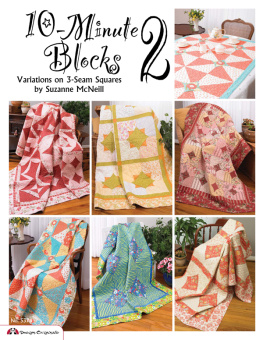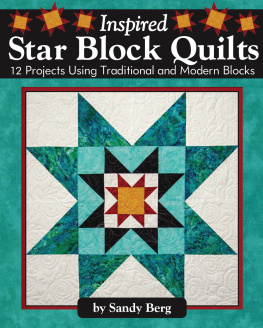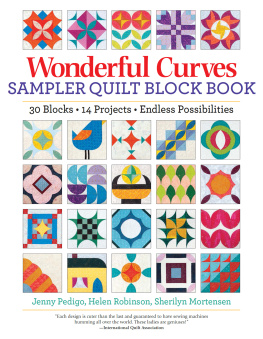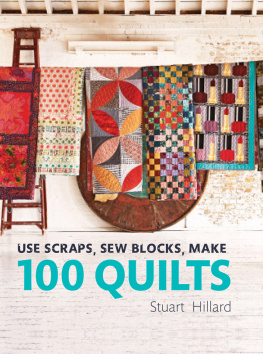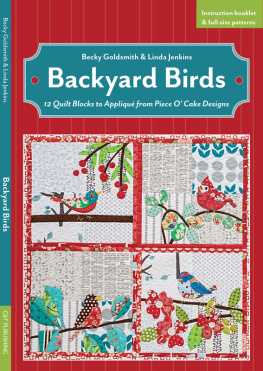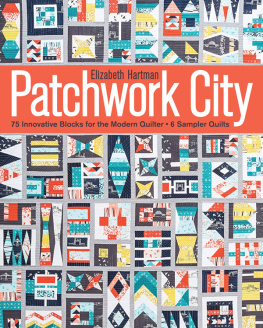Contents
Guide
Quilt BIG
BIGGER BLOCKS FOR FASTER FINISHES
JEMIMA FLENDT

CONTENTS
DEDICATION
To my girls, Shayla and Ashlynyou inspire me to show you how hard work and dedication will lead to making your dreams come true.
INTRODUCTION:
Its funny how life turns out. I never dreamed that one day I would pursue my hobby as a full-time profession. I started quilting when I was about 16 and sewing even before then. I never imagined that my work day would look the way it does today.
I know now that my teaching background plays a huge role in my professional quilting career. I have a passion for teaching others how to sew and quilt, and especially enjoy introducing new people to a love of fabric and textiles. I like that I get to travel to teach and host quilting workshops. Accepting and embracing my identity in the quilting industry has let me find my niche and where I fit in.
Writing my first book, Weekend Quilting, was a dream come true, made real only by lots of hard work and persistence. There was a steep learning curve as I not only designed the quilts but also discovered how best to communicate patterns to readers, especially beginners. Quilt Big brought new challenges, and I learned even more about quilting and writing along the way. Ultimately I wanted to write a book that would help new and experienced quilters alike quilt better.
In Quilt Big, I have taken traditional blocks and sized them up for a gigantic, bold look. With these designs, you can make even a short amount of time productive and satisfying by making progress on big blocks with fast finishes that showcase some of your favorite fabrics. Its all about taking your quilting to the next level, whether you are a beginner or have previous experience. Life is so full and busy these days for everyone, it can be challenging to make time for a hobby. The projects in Quilt Big feature a variety of techniques to help you hone your skills and because of their larger size, youll have them finished in no time.
I also included information to help you figure out the quilt math and see how easy it can be to make changes or modifications. Additionally, I added a variety of quilt-back designs so you can make the back of your quilt as much of a statement piece as the top. There are also suggestions for how to use leftover pieces from the quilt top or fabrics in your stash to make your quilt totally reversible and loveable from either side.
Whether you want to make these projects as special handmade gifts, to spruce up a spot on your couch, or simply for yourself, you will see how quickly and easily these blocks come together to make stunning and treasured quilts, pillows, and runners.
Happy quilting!
Jemima
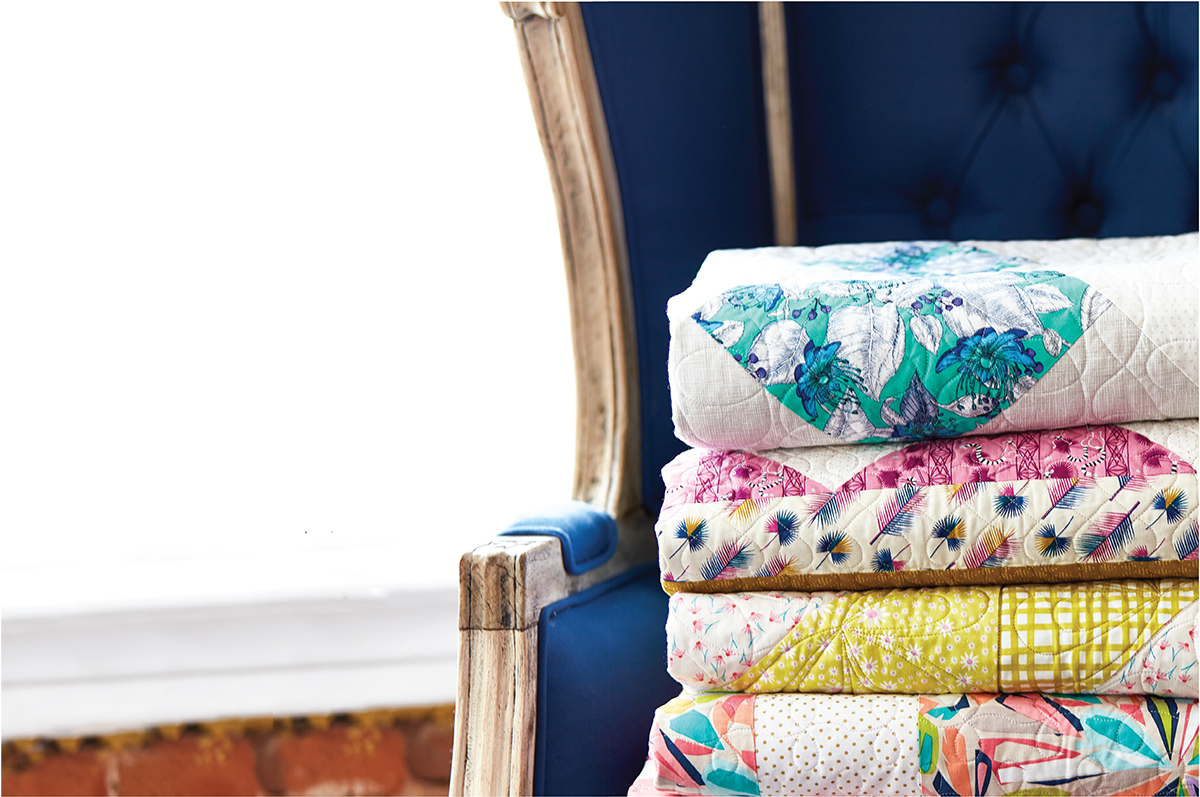
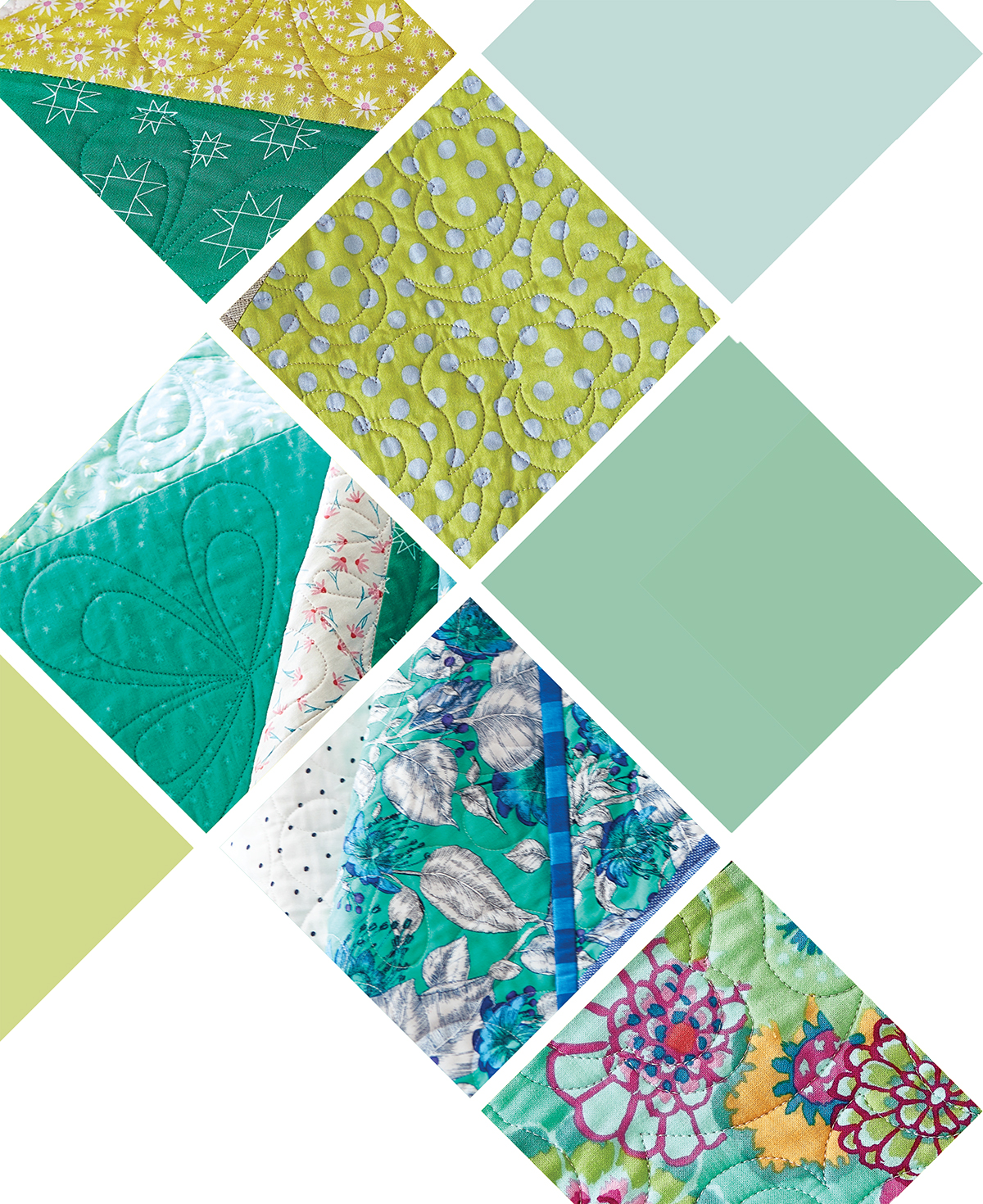
CHAPTER 1
QUILTING BASICS
TOOLS AND TECHNIQUES FOR QUILTING ON A GRAND SCALE
When it comes to quilting, bigger can certainly be better! Not only on trend, scaling up pattern designs can make for faster finishes. This book takes the inherent beauty found in single-block patterns and creates big, bold quilts, quickly and easily. What better way to learn the basics of piecing blocks or showcasing your favorite prints than by learning on a grand scale? The bonus: A complete quilt can be made in a matter of days rather than committing months to a single project.
Quilt blocks form the basis of most designs in this book. They take us back to the very heart of quilting with block designs that date back generations and can help you develop your skills and learn new techniques. In this book, we are looking at close to two dozen blocks and how we can use them to create supersized quilt patterns. While most of these blocks date back to the origins of quilting, you will see why they hold just as much relevance in quilting today.
Basic Tools & Supplies
- Sewing machine with 14" (6 mm) foot
- Additional machine feet, such as a zipper foot, will also be helpful
- Machine sewing needles
- Hand sewing needles for handquilting and binding
- Curved safety pins
- Rotary cutter and self-healing cutting mat
- Masking tape
- Clear acrylic rulers: 1212" (31.5 cm) square, 1212" (31.5 cm) Half-Square Triangle Square Up Ruler, 6" 12" (15 cm 30.5 cm) Flying Geese Square Up Ruler, and 612" 24" (16.5 cm 61 cm) ruler (I like Bloc Loc rulers)
- Scissors
- Erasable fabric marking pens
- Seam ripper
- Pencil
- Iron and ironing board
SEWING MACHINE NEEDLES
For general quilting and sewing projects, I use a Universal size 80 needle. Change your needle every 8 hours of sewing time or for every new quilt top. Having a nice sharp needle will ensure it moves smoothly through your fabrics so that you do not get any snagging, skipping, or pulling.
CUTTING
I like to cut fabrics with a rotary cutter and self-healing cutting mat. These mats are gentle on blades so your blade stays sharper longer. Change your rotary cutter blades often to ensure ease of cutting.
Using large 24" (61 cm) rulers will help you cut the longest lengths possible from your fabric. I have specified Bloc Loc rulers for several projects in this book; investing in them will help you cut more accurately when trimming blocks to size.
FABRIC
I love to use a variety of fabrics, including 100-percent cotton, linen, lawn, denim, chambray, and flannel. Often there may be several different fabric types within a single project. If you are starting out, I recommend sticking with 100-percent cotton patchwork fabric. As your skills grow, you can incorporate other fabrics to add texture and interest to your projects.
 Note: All fabric yardage in Quilt Big is based on 42" (106.5 cm) wide fabric. It is important to always check the width of your fabric before you begin cutting. Different companies use different widths for their fabrics so measure first to be sure. If the width of your fabric is not 42" (106.5 cm) you may need to make adjustments to the amount of fabric required.
Note: All fabric yardage in Quilt Big is based on 42" (106.5 cm) wide fabric. It is important to always check the width of your fabric before you begin cutting. Different companies use different widths for their fabrics so measure first to be sure. If the width of your fabric is not 42" (106.5 cm) you may need to make adjustments to the amount of fabric required.
FABRIC CHOICES
When creating large blocks, there are considerations that need to be made for scale of prints, including large-scale versus small-scale patterns and where each of these works best.
Animal Prints
When you are using prints with patterns such as animals or large flowers, you may need to pay a bit more attention when it comes to cutting. For example, you may cut animal prints in half and then realize that once cut, they may not work as desired. It may require more time to cut your fabrics carefully, but looking at where to cut and envisioning how the cut fabric will look once put together will result in a better finish as you re-piece the cut blocks.
Florals
Floral prints are fantastic for large-scale blocks as you get to really appreciate the work in the design and the artistry of the fabric. Many beautiful large-scale floral prints are now available and will work fabulously for these designs. Just consider the size of the print for the specific project before cutting. If the scale of the print is large and the pattern calls for lots of cut pieces, the florals may look distorted when you cut and re-sew the fabrics. Also, once some of the prints are cut up, the colors may look different than how they appeared as a singular piece of fabric.


